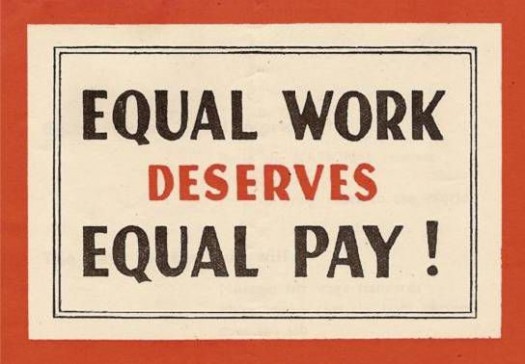
The Debate Over Fair Pay for Women

Editor’s note: Throughout the fall, VQR will be posting educational information related to women’s rights, to extend and support the articles in our Fall 2012 issue on The Female Conscience.
–––
With the women’s share of employment reaching 47 percent in 2011, it’s not surprising that women’s rights advocates continue to evaluate women’s progress toward equity in pay, employment opportunities, and advancement. Here’s a brief overview of the current debate over fair pay for women in the workforce.
What it is
Fair pay is the principle that gender should have no affect on a person’s job compensation.
Where things stand
The median weekly earnings for women employed full-time are only 80 percent of the median weekly earnings for men, despite the fact that the Equal Pay Act of 1963 prohibited gender-based pay discrimination, and the Civil Rights Act of 1964 banned any employment discrimination based on gender, race, or religion.
What critics say
Some analysts claim that the raw earnings statistics are misleading, and that they do not reflect gender discrimination on the part of employers. They explain the pay gap as largely the result of women’s personal decisions regarding field of study, choice of occupation, and family lifestyle.
For example, they point out that women tend to choose lower-paying occupations and industries (such as administrative office work or retail sales), and that they more frequently pursue fields of study leading to lower-paying occupations (such as teaching). Women are more likely than men to make life choices (particularly in relation to family and parenthood) that result in career interruptions and a decrease in cumulative work experience.
Critics also observe that the wage statistics do not take fringe benefits into account. They suggest that women are more likely to choose lower-paying jobs with family-friendly benefits than higher-paying jobs without those same benefits.
One detailed analysis from the consulting firm CONSAD reports that, once the raw statistics are adjusted for these factors, the actual pay gap is only 5 to 7 percent, and is likely a result of personal choices rather than employer bias. In other words, critics explain, there is no real problem and therefore no need for a solution.
What women’s rights advocates say
It’s fair for employers to consider factors like experience, tenure, and educational background when making compensation decisions. However, a Government Accountability Office report showed a 20 percent pay gap even after the raw statistics were adjusted for these factors.
Furthermore, men have higher median wages even in careers occupied predominantly by women. Men make more than women in almost every one of the hundreds of occupations and industries tracked by the Bureau of Labor Statistics, with African-American and Hispanic/Latino women experiencing the largest pay gap relative to white men (the highest-paid demographic).
Although most wage analyses show that women gravitate toward lower-paying jobs, they don’t address whether and to what extent those jobs are lower-paying because they are occupied primarily by women. Two commonly cited examples note the pay difference between emergency services operators (predominantly female) and fire dispatchers (predominantly male), and between social workers (primarily female) and parole officers (primarily male).
Regardless of their conclusions, reports that point out the uneven gender distribution in the workplace and in childcare highlight issues that need further investigation. In a society where women are increasingly becoming the household’s sole or primary breadwinner, it’s worthwhile to consider how public policy, gender stereotypes, and societal expectations may be shaping the decisions of both employers and employees and resulting in lower wages for women overall.
What’s being done
Although gender-based pay discrimination has been illegal since 1963, some weaknesses in the law have prevented discovery of the discrimination and (once it is discovered) action against it. Recent legislation efforts have focused on making it easier to compare pay and fix problems.
The Lilly Ledbetter Fair Pay Act of 2009 effectively extended the statute of limitations for pay discrimination claims, making it easier to file suit for discriminatory pay practices.
Many employers prohibit employees from disclosing (and therefore comparing) their earnings. The Paycheck Fairness Act defeated in the Senate during the last session of Congress was the most recent attempt to address this issue (as well as a few other issues).
The Fair Pay Act, also introduced in the last session of Congress, went quite a bit further. It would have required employers to equalize pay not just for the same exact job, but for all jobs providing equivalent value and requiring equivalent skill and effort.
Women’s rights advocates support the reintroduction and passage of equal pay bills during the next session of Congress.
More resources
Download the AAUW’s nicely written summary of the pay gap, and check out NOW’s pay equity fact sheet.
The Bureau of Labor Statistics offers information on wages by occupation, industry, and location here. You can also access the same data via the Aequitas iPhone app.
———
About the author: Nicole Klungle is a freelance writer and editor who lives in Cincinnati, Ohio.
